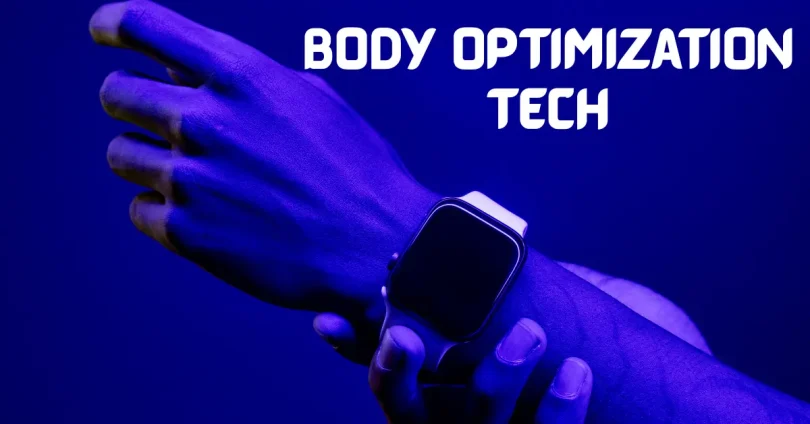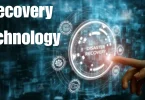The term body optimization tech has become synonymous with cutting-edge technology aimed at enhancing human performance and well-being. In an age where people are more conscious of health, longevity, and peak performance, body optimization technology has become a pivotal tool in achieving these goals. It integrates a variety of tools, devices, and innovations—ranging from wearables and AI-powered platforms to biohacking techniques and personalized nutrition solutions. All of these aim to optimize physical, mental, and emotional health.
This article delves deeply into the world of body optimization tech, exploring the key components, technologies, benefits, and future potential of this growing field.
What is Body Optimization Tech?

Body optimization tech refers to the integration of digital technologies and tools designed to monitor, enhance, and optimize the human body’s functions. The technology involves the use of data, AI, wearables, and specialized software to assess and improve various aspects of human performance—whether physical, mental, or emotional.
This concept is more than just about improving fitness; it is about creating a holistic approach to enhancing personal health. Whether through tracking biomarkers, improving sleep, optimizing nutrition, or providing feedback on recovery, body optimization tech encompasses everything that contributes to peak performance.
You may also like to read this:
Top 10 Tech Innovations Transforming Industries In 2025
Latest Technology Trends In 2025 You Should Know About
The Future Of Technology And Innovation Explained
The Best Smart Fitness Equipment For Every Workout
Best Wearable Fitness Trackers 2025: Monitor Your Health
Powerful Strength And Performance Tools For Success
Key Technologies in Body Optimization

1. Wearable Technology
Wearable devices are the most visible and accessible aspect of body optimization tech. These gadgets continuously monitor the wearer’s biological functions, providing real-time data that helps users optimize their performance, health, and well-being. The information captured by wearables helps individuals track various health metrics and make adjustments to their routines based on hard data.
Some key wearables in body optimization include:
- Smartwatches (e.g., Apple Watch, Garmin Fenix, Samsung Galaxy Watch): These provide vital health tracking metrics such as heart rate, steps taken, blood oxygen levels, and even ECG readings. Smartwatches are great for monitoring both physical activity and recovery.
- Fitness trackers (e.g., Fitbit, WHOOP Strap): These are specifically designed to track physical activity, including steps, calories burned, active minutes, and sleep patterns. The WHOOP Strap, for example, also focuses on recovery metrics and offers insights into rest and performance.
- Smart rings (e.g., Oura Ring): These wearable devices focus on sleep quality, heart rate, body temperature, and overall activity levels. The Oura Ring, for example, offers in-depth sleep analysis and personalized recommendations for rest and recovery.
Wearables have become so sophisticated that some now include sensors that monitor skin temperature, oxygen levels, and even stress responses. This provides users with an in-depth understanding of their overall health.
2. AI and Data Analytics
One of the most powerful aspects of body optimization tech is the use of artificial intelligence and data analytics. These technologies process the vast amount of data collected by wearables, fitness trackers, and other devices, providing actionable insights that help individuals make data-driven decisions regarding their health and performance.
AI and data analytics can:
- Personalize workout routines: AI-based algorithms analyze fitness data (such as heart rate, strength levels, and endurance) to create customized workout regimens.
- Optimize nutrition: AI can provide personalized dietary recommendations based on an individual’s activity level, metabolism, and body composition.
- Predict health outcomes: By analyzing patterns in a user’s data, AI can predict health risks (such as the likelihood of developing cardiovascular diseases or diabetes) and recommend preventive measures.
An example of AI-driven platforms for body optimization is WHOOP. This platform uses data from its wearable strap to predict a user’s recovery state, suggest workout intensities, and optimize their training.
3. Biohacking Techniques
Biohacking refers to the use of science and technology to alter and improve the biological functions of the body. Often employed by those looking for rapid performance enhancement or health optimization, biohacking techniques have gained significant traction in recent years.
Popular biohacking practices include:
- Nootropics: These are supplements that claim to enhance cognitive functions such as memory, focus, and mental clarity. They are often used by individuals looking to optimize mental performance.
- Intermittent fasting: This dietary practice involves alternating periods of eating and fasting, which is believed to help with fat burning, muscle gain, and metabolic health.
- Cold therapy: Cold exposure, including ice baths and cold showers, is used to promote recovery, reduce inflammation, and improve circulation. Techniques such as cryotherapy (exposure to extremely cold temperatures) are also used to boost athletic performance and speed up recovery.
- Gene editing (CRISPR): This cutting-edge technology, while still in its infancy, promises to offer a way to optimize human health at a genetic level, potentially eliminating inherited diseases and enhancing physical capabilities.
Biohacking is often considered an experimental and controversial area of body optimization, but many of its techniques have found support in the broader wellness community.
4. Personalized Nutrition and Genetic Testing
Understanding the unique nutritional needs of each individual is central to body optimization. This area of technology is focused on tailoring diets and supplementation plans to an individual’s unique genetic makeup, metabolism, and lifestyle.
Key technologies in personalized nutrition:
- Genetic testing (e.g., DNAfit, 23andMe): These services analyze an individual’s DNA to identify genetic predispositions related to nutrition, fitness, and overall health. Insights from genetic testing can help people understand how they metabolize food, how they respond to exercise, and their risks for certain conditions.
- Blood tests (e.g., Everlywell, InsideTracker): These tests provide insights into key biomarkers such as cholesterol, blood glucose, and vitamin deficiencies. Personalized recommendations are given based on the blood test results.
- Gut microbiome testing (e.g., Viome, Thryve): These tests analyze the bacteria in your digestive system, providing insights into how they affect your digestion, metabolism, and overall health. Microbiome testing is becoming an important part of understanding how diet influences well-being.
These tools allow individuals to make informed decisions about what foods and supplements are best suited for their body’s unique needs.
5. Recovery Technologies
Recovery is an essential aspect of body optimization. Whether you’re an athlete or someone who wants to optimize their physical and mental health, speeding up recovery is key to improving overall performance.
Technologies in this space include:
- Compression therapy (e.g., NormaTec): These devices use air compression to stimulate circulation and reduce muscle soreness. They are particularly popular among athletes and fitness enthusiasts.
- Electrical muscle stimulation (EMS) (e.g., PowerDot): EMS devices use electrical impulses to stimulate muscles, improve recovery time, and prevent injury.
- Infrared light therapy (e.g., Joovv): This technology uses infrared light to promote muscle recovery, reduce inflammation, and accelerate tissue repair.
- Massage guns (e.g., Theragun): These handheld devices use percussive therapy to relieve muscle tightness, improve circulation, and accelerate recovery.
These technologies help reduce downtime, minimize muscle soreness, and enhance recovery, ensuring that users can perform at their peak more frequently.
6. Sleep Optimization
Sleep is one of the most critical aspects of body optimization. Poor sleep can lead to decreased performance, impaired recovery, and negative long-term health outcomes. Body optimization tech provides individuals with tools to optimize their sleep, ensuring they get the most restorative rest possible.
Sleep optimization technologies include:
- Sleep tracking wearables (e.g., Oura Ring, WHOOP Strap): These wearables monitor sleep stages, heart rate variability, and movement during sleep to provide insights into sleep quality and recovery.
- Smart mattresses (e.g., Eight Sleep, Sleep Number): These beds can automatically adjust the temperature, firmness, and position of the bed to improve comfort and sleep quality.
- Sleep apps (e.g., Sleep Cycle, Calm): These apps track sleep patterns and offer recommendations for improving sleep hygiene, such as ideal bedtimes and relaxation techniques.
Better sleep directly impacts physical recovery, cognitive function, and emotional health, making sleep optimization an integral part of body optimization.
7. Hormonal and Genetic Testing
Hormonal imbalances can have a significant impact on physical and mental performance. Technologies that measure hormone levels and genetic predispositions are helping individuals achieve optimal health by addressing imbalances early on.
Hormonal testing services include:
- Hormone level tests (e.g., Everlywell, LabCorp): These tests provide insights into critical hormones such as testosterone, cortisol, and thyroid levels.
- Genetic testing (e.g., DNAfit): These tests analyze genetic predispositions that can help tailor personalized health recommendations for hormone management, metabolism, and more.
By understanding hormonal imbalances and genetic predispositions, individuals can optimize their health and performance.
Benefits of Body Optimization Tech
- Improved Physical Performance: These technologies enhance athletic performance, optimize strength, and improve endurance.
- Better Sleep: With the use of wearables and apps, individuals can track and optimize sleep, improving overall health and performance.
- Personalized Health Insights: Body optimization tech provides personalized health recommendations based on unique data, enhancing health management.
- Faster Recovery: Recovery technologies help reduce muscle soreness, prevent injuries, and accelerate the healing process.
- Enhanced Mental Clarity: Nootropics, mental health tracking, and AI-based insights improve cognitive performance and mental well-being.
The Future of Body Optimization Tech
The future of body optimization tech is bright and rapidly evolving. With advancements in AI, biotechnology, nanotechnology, and gene editing, we can expect more precise and effective ways to enhance the human body.
Technologies like brain-computer interfaces (BCIs) and personalized medicine will allow individuals to unlock even more potential in their bodies.
Conclusion
Body optimization tech is revolutionizing how we approach health, fitness, and overall well-being. With powerful wearables, AI-driven insights, biohacking techniques, and personalized nutrition, individuals have more control than ever over their health and performance.
By leveraging these technologies, anyone can optimize their body for peak performance, recovery, and longevity. As this field continues to grow, it will redefine how we view human potential and pave the way for enhanced personal health on an individual level.
FAQs
1. What is body optimization technology?
Body optimization technology uses digital tools, wearables, and AI to monitor and enhance physical, mental, and emotional health, helping individuals achieve peak performance and well-being.
2. How does body optimization technology improve health?
It provides personalized insights into activity, nutrition, sleep, and recovery, guiding users to optimize their performance and overall health.
3. What devices are used in body optimization tech?
Wearables (smartwatches, fitness trackers, smart rings), AI platforms, recovery devices (compression boots, massage guns), sleep optimization tools (smart mattresses), and genetic/blood testing devices.
4. Is body optimization technology suitable for everyone?
Yes, it benefits a wide range of people, from athletes to those seeking overall health optimization. Devices and platforms can be tailored to individual needs.
5. How accurate is wearable data?
Wearable data is generally reliable for metrics like heart rate and activity, though sleep tracking and calorie burn may have some variations. It should be used as a guideline.



